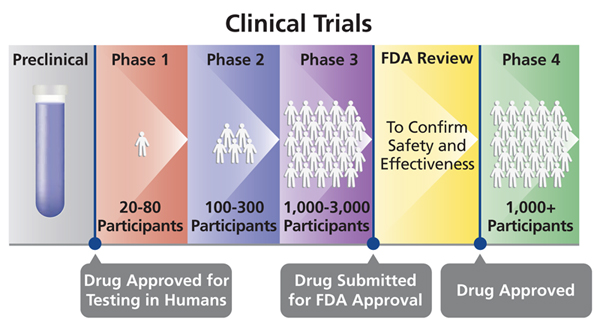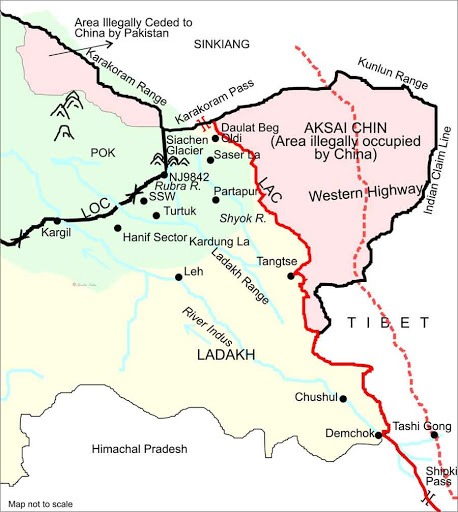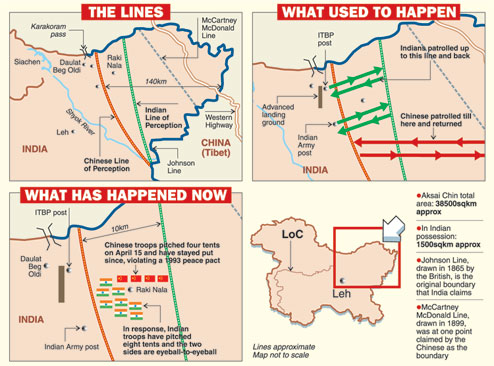Contents
- Can a COVID-19 vaccine be developed soon?
- India-China: the line of actual contest
- Why India’s forex reserves are rising?
CAN A COVID-19 VACCINE BE DEVELOPED SOON?
Focus: GS-III Science and Technology
Introduction
- A vaccine could be a weakened biological or synthetic agent administered to humans that will protect them from contracting infectious diseases by supplying specific antibodies to neutralise the disease-causing pathogen, while not making a person actually sick from it.
- nCoV-2 is a virus that has just emerged in humans, and the response will be more complex because there are no existing vaccines or production processes for coronavirus vaccines.
What is the process of vaccine development?
- The general stages of the development cycle of a vaccine are: exploratory stage, pre-clinical stage, clinical development, regulatory review and approval, manufacturing and quality control.
- If vaccine candidates do make it to the third stage, clinical development is a three-phase process.
What are Clinical trials?
- Clinical trials or Human Trials are experimental studies on human participants that helps to determine the safety concerns, effectivity and potency of a particular treatment (drugs, vaccines, dietary supplements, dietary choices, medical devices, etc.)
- While preclinical research answers basic questions about a drug’s safety, it is not a substitute for studies of ways the drug will interact with the human body – Hence, Clinical Trials are very important in understanding the effects of administering a particular treatment.
Human Clinical Trial Phases

Preclinical Phase (Phase 0)
- Drug and device testing begin with extensive laboratory research which can involve years of experiments in animals and human cells.
- If the initial laboratory research is successful, researches send the data to the Food and Drug Administration (FDA) for approval to continue research and testing in humans.
- Once approved, human testing of experimental drugs and devices can begin and is typically conducted in four phases.
Phase I
- Phase I studies assess the safety of a drug or device. Usually includes a small number of healthy volunteers (20 to 100).
- The study is designed to determine the effects of the drug or device on humans including how it is absorbed, metabolized, and excreted.
- This phase also investigates the side effects that occur as dosage levels are increased.
Phase II
- Phase II studies test the efficacy of a drug or device. Involves up to several hundred patients.
- Most phase II studies are randomized trials where one group of patients receives the experimental drug, while a second “control” group receives a standard treatment or placebo.
- Often these studies are “blinded” which means that neither the patients nor the researchers know who has received the experimental drug.
Phase III
- Phase III studies involve randomized and blind testing in several hundred to several thousand patients. This large-scale testing, which can last several years.
- Once Phase III is complete, a pharmaceutical company can request FDA approval for marketing the drug.
Phase IV
- Phase IV studies, often called Post Marketing Surveillance Trials, are conducted after a drug or device has been approved for consumer sale.
- Phase IV studies can result in a drug or device being taken off the market or restrictions of use could be placed.
What is the status of a SARS-CoV-2 vaccine?
- To start with, the primary advantage with SARS-CoV-2 was that it was identified in record time, and its genomic sequence was also made globally available.
- This has enabled SARS-nCoV-2 vaccine candidates to be generated.
- Two important steps are typically needed before bringing a vaccine into clinical trials.
- First, the vaccine is tested in appropriate animal models to see whether it is protective.
- Second, vaccines need to be tested for toxicity in animals, e.g., in rabbits, and only the safety of the vaccine will be evaluated.
- This testing, which has to be performed in a manner compliant with GLP (Good Laboratory Practice), typically takes 3–6 months to complete.
Current Status of Candidate vaccines
- The World Health Organisation (WHO) site lists 10 vaccine candidates in clinical evaluation.
- Of these 10 candidates in clinical evaluation, the three that are in Phase 2 and other candidates are in the first phase and they include four trials in China.
- In all, 125+ candidate vaccines are in various stages of pre-clinical evaluation, including some in India.
What about current projections and what happens next?
- The development of vaccines for human use takes years normally.
- Some of the other concerns for the development of an effective vaccine are the prospect of the virus mutating, and a waning of the antibody response.
- It is known that infection with human coronaviruses does not always produce long-lived antibody responses, and re-infection, likely to be mild symptoms in a fraction of individuals, is possible after an extended period of time.
-Source: The Hindu
INDIA-CHINA: THE LINE OF ACTUAL CONTEST
Focus: GS-II International Relations, GS-I History, Geography
Introduction
The ongoing military standoffs with China at multiple points along the India-China border has turned the spotlight to the single most important element that has helped keep the peace across the Himalayas: The Line of Actual Control (LAC).
Yet, what exactly the LAC is remains a source of much confusion.
How is LAC different from LOC (apart from the obvious)?
- The most crucial difference between the Line of Control (LoC) that separates India and Pakistan and LAC is that:
- With Pakistan, India has an international boundary, which has been agreed upon, and the LoC, which has been delineated on a map by both sides.
- However, the alignment of the LAC has never been agreed upon, and it has neither been delineated nor demarcated. There is no official map in the public domain that depicts the LAC.
Note: Even though the LAC is far less clear than the LoC, it has remained much more peaceful, with not a shot fired since 1975 at Tulung La.
Line of Actual Control (LAC)
- The disputed boundary between India and China, also known as the Line of Actual Control (LAC), is divided into three sectors: western, middle and eastern.
- The countries disagree on the exact location of the LAC in various areas, so much so that India claims that the LAC is 3,488 km long while the Chinese believe it to be around 2,000 km long.
- The two armies try and dominate by patrol to the areas up to their respective perceptions of the LAC, often bringing them into conflict and leading to incidents such as those witnessed in Naku La in Sikkim earlier this month.
- The LAC mostly passes on the land, but Pangong Tso is a unique case where it passes through the water as well. The points in the water at which the Indian claim ends and Chinese claim begins are not agreed upon mutually.

Where does the LAC run?
- For the most part, in the western sector, it broadly corresponds with the border as China sees it.
- There are differences in several points here, including at the very start of the LAC, which India reportedly pegs northwest of the Karakoram Pass, but China further south.
- In the eastern sector, it broadly corresponds with the border as India sees it, along the McMahon Line that separates Arunachal Pradesh from Tibet.
- In the middle sector and Sikkim, the LAC is broadly aligned with the borders as India and China see it, with minor differences here.
What causes “Face-offs”?
- The problem is India and China do not agree on the alignment of the LAC everywhere.
- Differences in perception, particularly in 13 spots in the western, middle and eastern sectors of the border, often lead to what are called “face offs”, when patrols encounter each other in these grey zones that lie in between the different alignments.
- Some of these areas are Chumar, Demchok and the north bank of the Pangong lake in the western sector, Barahoti in the middle sector, and Sumdorong Chu in the east.
What happened Recently?

- At Pangong Tso, India’s LAC runs at Finger 8, and China’s at Finger 4. The “fingers” from 1 to 8 refer to mountain spurs that run from west to east on the lake’s northern bank.
- Currently, Chinese troops have erected tents in the Finger 4 area and are preventing India from reaching its LAC at Finger 8, leading to a stand-off.
History: Genesis of the Current Situation
- In a 1959 letter to Jawaharlal Nehru, then Chinese Premier Zhou Enlai suggested the armed forces of both sides withdraw from the so-called McMahon Line in the east, and from the line up to which each side exercises actual control in the west.
- Yet where exactly each side believed it exercised control was a matter of debate, complicated by the fact that China’s alignments kept changing.
- The “LAC” it referred to in 1960 and 1962 wasn’t the same as 1959.
- When India and China signed the landmark Border Peace and Tranquility Agreement (BPTA) in 1993, the first legal agreement that recognised the LAC, they avoided this problem by referring to the LAC at the time, and not the LAC of 1959, 1960 or 1962, all of which had different meanings.
- Both the 1993 BPTA agreement and the subsequent agreement on confidence-building measures in 1996 acknowledged that both sides would ultimately clarify the LAC. That process has, however, stalled since 2002, when China walked away from exchanging maps in the western sector.
-Source: The Hindu
WHY INDIA’S FOREX RESERVES ARE RISING?
Focus: GS-III Indian Economy
Why in news?
India’s forex reserves crossed $500 billion for the first time ever in June 2020.
What are forex reserves?
- Forex reserves are external assets in the form of gold, SDRs (special drawing rights of the IMF) and foreign currency assets (capital inflows to the capital markets, FDI and external commercial borrowings) accumulated by India and controlled by the Reserve Bank of India.
- The International Monetary Fund says official foreign exchange reserves are held in support of a range of objectives like supporting and maintaining confidence in the policies for monetary and exchange rate management including the capacity to intervene in support of the national or union currency.
Why are forex reserves rising despite the slowdown in the economy?
- The major reason for the rise in forex reserves is the rise in investment in foreign portfolio investors in Indian stocks and foreign direct investments (FDIs) and Foreign investors had acquired stakes in several Indian companies.
- The fall in crude oil prices has brought down the oil import bill, saving precious foreign exchange.
- Overseas remittances and foreign travels have fallen steeply.
- The Forex reserves have grown since the announcement to cut corporate tax rates on September 2020.
What’s the significance of rising forex reserves?
- The rising forex reserves give a lot of comfort to the government and the Reserve Bank of India in managing India’s external and internal financial issues at a time when the economic growth is set to contract by 1.5 per cent in 2020-21.
- The rising reserves have also helped the rupee to strengthen against the dollar.
- Reserves will provide a level of confidence to markets that a country can meet its external obligations, demonstrate the backing of domestic currency by external assets, assist the government in meeting its foreign exchange needs and external debt obligations and maintain a reserve for national disasters or emergencies.
- Reserves will provide a level of confidence to markets that a country can meet its external obligations, demonstrate the backing of domestic currency by external assets, assist the government in meeting its foreign exchange needs and external debt obligations and maintain a reserve for national disasters or emergencies.
What does the RBI do with the forex reserves?
- The Reserve Bank functions as the custodian and manager of forex reserves, and operates within the overall policy framework agreed upon with the government.
- The RBI allocates the dollars for specific purposes, and uses the forex reserves for the orderly movement of the rupee.
- Of late, the RBI has been buying dollars from the market to shore up the forex reserves.
- When the RBI mops up dollars, it releases an equal amount in rupees. This excess liquidity is sterilised through issue of bonds and securities and LAF operations.
Where are India’s forex reserves kept?
- The RBI Act, 1934 provides the overarching legal framework for deployment of reserves in different foreign currency assets and gold within the broad parameters of currencies, instruments, issuers and counterparties. As much as 64 per cent of the foreign currency reserves are held in securities like Treasury bills of foreign countries.
- India also held 650+ tonnes of gold as of March 2020, with more than half of it being held overseas in safe custody with the Bank of England and the Bank for International Settlements, while the remaining gold is held domestically.
-Source: Indian Express





